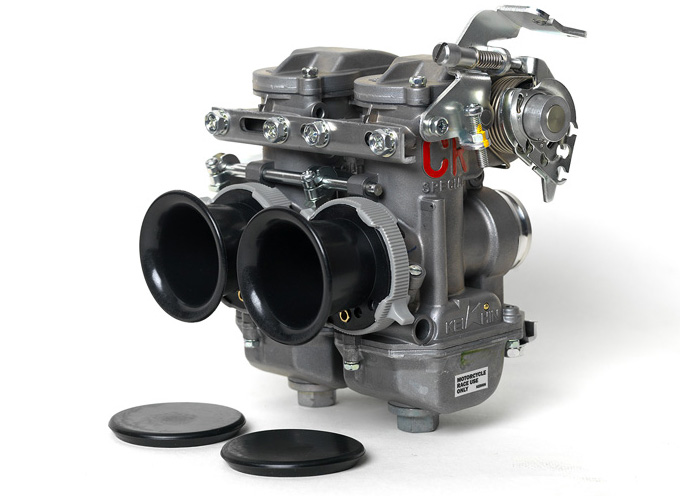Update: Hey guys, sorry for some confusion on this article. This formula here mostly applies to small engine Dell’Orto PHBG carbs (12-21mm). It might work for others (tho definitely not for Kehin PWK’s). Keep this in mind! Generally speaking tho, the default main jet +15% is often the limit for most carburetors!
Determining the correct main jet size for you engine can often be a tedious task. Especially if you don’t know where to start. Sure, the carburetor ships with a main jet, but does this match your engine at all? I found that the following formula gives you a near perfect result for tuned engines and is a perfect starting point to determine the correct main jet size!
Let’s jump right into the formula as it really is a piece of cake:
The idea behind this formula is to give you the ideal main jet size for a theoretical perfect engine. A perfect engine is determined by perfectly matching components and ideal condition (sea level, perfect weather, etc.) When using a racing exhaust and an open air filter (along with a good reed valve, etc.) you will notice that this formula will give you pretty much perfect results for any carburetor based engine (both 2-stroke and 4-stroke).
The Stock Engine Example
Let’s apply this formula to an example: On a stock scooter you often have a 12mm carburetor installed, along with a restricted stock exhaust and a bulky stock airbox. In most cases the preinstalled main jet is a 55. This makes sense, as the exhaust and stock airbox restrict the engine. If you now go ahead and install a sports pipe and an unrestricted filter mat (not a pure racing filter as a stock engine can’t handle this). You will notice that the formula gives you a pretty much perfect setup:
The reason why the manufacturer installs a 55 main jet is due to the restriction caused by the stock exhaust and air box. It restricts the engine to produce its full potential and therefore requires a lower air to fuel ratio.
The 70cc Sports Engine Example
Another example on a more highly tuned engine. Let’s imagine an engine with a Stage6 Sport Pro MK2 70cc kit, a 17.5mm Dellorto carburetor and a Stage6 Sport Pro exhaust, along with a sports air filter and a Stage6 Reed Valve:
The resulting 88 main jet will be near perfect. Probably a bit too rich but an ideal starting point!
Going a Step Further
If you want to go a bit further with the formula, you can apply a variable to it, which is fluent between 0.9 and 1. The variable can be set according to your setup, for example on a complete stock engine it would be 0.9:
For a racing air filter and a racing exhaust I always add 0.05 each to the formula. This way I end up with a theoretical value that matches my components. Given our example above for the 70cc engine, let’s imagine we would ride the setup with the original air box (maybe slightly tuned). I would then add 0.05 to the 0.9 due to the Stage6 exhaust:
Again, the size 84 main jet will probably give me very good results for this setup and allows me to quickly determine the perfect main jet!
The Last 5% on Main Jet Determination
Surely there are other factors that need to be kept in mind when choosing the main jet. The elevation above sea level and the outside temperature are certainly affecting the optimal fuel to air ratio. Also, every engine behaves slightly different. Nonetheless, above formula should give a good indication on where to start! Hopefully I’ll get around to write a full carburetor setup tutorial soon! Until then, have a look at my How To on Spark Plug Reading and drive safely.
Let me know in the comments which main jet you ride and if the formula matches! Also, if you need help, drop me a comment!
